#serial key of software
Explore tagged Tumblr posts
Text
#xyywrites tips#writer polls#polls#my polls#fun#writerblr#writing#writings#writers#creative writing#writing stuff#writing life#fic writing#writing community#fanfic writing#am writing#poll#tumblr polls#xyywrites#xyywrites polls#random#random polls#fun polls#writing polls#question to writers#anonymous polls#questions
42 notes
·
View notes
Text
On Bodging Silly Mistakes
After a few weeks of rest and working on non-homebrew-related projects since getting my 68030 stack running 8-user BASIC, I've circled back around to the project. My goal is to have it ready to exhibit for VCF Southwest 2025 in June.
The first thing to do when picking up an old project is to make sure it still works to begin with.
It did not.
The computer would start up, go through its boot process, and start the user programs. The supervisor terminal would accept and execute commands, but none of the user terminals would accept input.
I could tell the serial data was making it to the machine, because my 8-port serial card has indicator LEDs on the Transmit & Receive signals and they were working as expected. If I held down a key as the system booted, it would print that character a few times before stopping and then no longer accept any more data. So it really looked like the hardware was working. Nothing had changed in software so that wasn't likely to be the issue.
It reminded me of the problems I encountered with reading from disk when CPU cache was preventing the updated disk status bit from being read. The serial card supports asserting the CPU's Cache Inhibit signal, but perhaps that circuit wasn't functioning. There was no change with it connected or not. Time to break out the oscilloscope. The Cache Inhibit signal was always low — always asserted. Cache wasn't the problem because cache was effectively always disabled.
Out of ideas, it was time to break out the logic analyzer. The I/O Read & Write signals on the serial card were working as expected, and it was properly addressing the card & its individual ports. So next thing was to check was the actual data being read from the UARTs.
Letting the logic analyzer run and watching the data fly through, the problem finally made itself known — the UARTs were not setting bit 0 of the status byte to indicate that they had received data. The data was getting to the UART, it just wasn't acknowledged.
But why? And why did it work initially on restart and then stop? And why did it work without issue a few weeks ago? What is different?
What is different, indeed. I have made one change to the hardware since I last ran it — I added a proper watchdog/power-on-reset controller. If the power supply drops below 4.7 volts, it will reset the computer. The power supply I had been using was marginal and was getting caught by the watchdog, so I switched to a proper power PC supply.
So what's different since last time I ran the system is my reset circuit is more effective and the system voltage should be much more stable 5V.
And that's when I realized a mistake I made in the design for my 8-port serial card. The 68k reset signal is active-low and the 16C55x UART reset signal is active-high. I was trying to minimize part count, and didn't have an inverter for the reset signal, so I used what I had on hand — a buffer with an active-low enable signal.

Anyone well-versed in electronics may already see the problem.
When the CPU-RESET# signal is asserted (low), the buffer will set its output, IO-RESET to match its input, VCC (high). That's great, we get a high signal on the output whenever the CPU Reset signal is low.
Except ... what happens when the CPU Reset signal is not asserted? The buffer goes open-collector and doesn't pull the IO-RESET signal one way or the other; it's just left floating.
Floating signals are bad news for digital circuits. Their behavior is unpredictable and subject to environmental noise, power fluctuations, etc. For my IO-RESET signal to function properly, something needs to pull it low whenever the 74'125 buffer is not actively driving it high. A good-sized pull-down resistor should do the job just fine, so I dug through my stock and found a 3.65k surface-mount resistor and bodged it onto the back side of the board.

And sure enough, that fixed the problem!
It is possible that when I was running the system on that marginal power supply previously, the IO-RESET signal was able to stay just low enough to not trigger reset on the UARTs. Or it could have just been different environmental factors.
I'm glad I took the time to test the machine today, and I'm glad this bug came up. It's the kind of bug that could easily have come up when running in a new environment for the first time — such as on the show floor at VCFSW. Far better to run into a bug like this at home with access to all of the tools (and time) to figure it out.
Now that things are up and running again I can continue my testing and setup for VCFSW.
#homebrew computing#homebrew computer#vintage computing#motorola 68030#motorola 68k#mc68030#wrap030#vcfsw
16 notes
·
View notes
Text
Matt Shuham at HuffPost:
President Donald Trump on Monday demanded that Tina Peters — a key supporter who was behind one of the most significant election security breaches in years — be freed from incarceration in Colorado, where she’s serving a yearslong prison sentence. Peters is a former county clerk found guilty on seven counts by a jury of her peers in state court last year. In a Truth Social post Monday night, Trump referred to Peters’ prosecution as “a Communist persecution by the Radical Left Democrats to cover up their Election crimes and misdeeds in 2020.” He attacked Colorado’s Democratic attorney general, Phil Weiser, and demanded the Justice Department “take all necessary action to help secure the release of this ‘hostage’ being held in a Colorado prison by the Democrats, for political reasons.” Trump said Peters, who he called an “innocent Political Prisoner,” had “worked to expose and document Democrat Election Fraud” — repeating his yearslong lie that he didn’t actually lose the 2020 election but, rather, was the victim of an impossibly complex, nationwide fraud scheme. What Peters actually did — while working as the elected county clerk in Mesa County, Colorado — was allow a computer analyst associated with MyPillow CEO Mike Lindell into a secure in-person software update for the county’s election machines, in yet another unsuccessful effort to sow doubt about Joe Biden’s 2020 win. The analyst, former pro surfer and RVCA founder Conan Hayes, attended the software update, using the name and recently issued office badge of a Mesa County local. Images of the update process, known as a trusted build, were later shared online and at a 2021 “symposium” on the 2020 election results hosted by Lindell — around the same time state officials arrived at the Mesa County clerk’s office to investigate. Ultimately, a Colorado jury convicted Peters on four felony counts (three counts of attempting to influence a public servant and one count of conspiracy to commit criminal impersonation) and three misdemeanors (official misconduct, violation of duty and failing to comply with the secretary of state). Peters was acquitted on three felony counts, one each of identity theft, conspiracy to commit criminal impersonation and criminal impersonation.
The case represents one of the most significant U.S. election breaches to result from Trump’s attack on the voting process. Prosecutors described Peters as “a fox guarding the henhouse,” and Colorado Judge Matthew Barrett sentenced her to nine years behind bars, calling her a “charlatan” who’d peddled election “snake oil.”
[...]
‘A Grotesque Attempt To Weaponize The Rule Of Law’
Despite the strong evidence, conviction and sentence against Peters — or maybe as a result of them — the Trump administration has since March made some unusually aggressive moves to help Peters. That month, the Justice Department took the unusual step of filing a statement of interest in a federal court case Peters has filed to challenge her ongoing detention while she appeals her state conviction. “Reasonable concerns have been raised about various aspects of Ms. Peters’ case,” the filing read, urging the court’s prompt and careful consideration of Peters’ habeas corpus petition. The filing also said the Justice Department was reviewing Peters’ conviction under an executive order from Trump concerning federal law enforcement — specifically whether Peters’ case was “oriented more toward inflicting political pain than toward pursuing actual justice or legitimate governmental objectives.”
Donald Trump panders to criminals by calling for the release of former Mesa County Clerk and serial election denier Tina Peters from prison.
#Tina Peters#Election Denialism#Mike Lindell#Donald Trump#Mesa County Colorado#Cyber Symposium#Phil Weiser
3 notes
·
View notes
Text
A little something that popped into my head this afternoon as part of a possible sequel to "Working for the Doctor". Yeah, I know. I need to finish it. It's getting there.
***
Layne frowned deeply as he drove over to Geoff's house. His body was tense and he was ready for a fight--and with the way Geoff had been acting lately he knew he was likely to get one.
Geoff's behavior had been growing increasingly erratic lately, but today had crossed all lines. Layne could still hear the collective gasp when Geoff had slapped Kathy in full view of Tony and VoicePlay. None of them had been able to move for several seconds, which had given him time to declare that he was leaving VoicePlay and wanted a divorce, then turn and storm out of PattyCake. They had taken turns hugging Kathy to comfort her, and Cesar had even cried a little along with her. Right now Kathy and William were staying at a hotel, and they would all be helping her get her and William's belongings in the morning--just in case Geoff was still spoiling for a fight.
But Layne couldn't wait that long to confront Geoff. He'd barely made it until closing time. He was going to find out what was going on come hell, high water, or angry bass singer. Something had gone severely sideways, and Geoff wasn't going to throw his life away as long as Layne could stop it.
Layne parked on the street and walked up the sidewalk to Geoff's house. They had exchanged house keys long ago in case of emergencies--and as far as Layne was concerned, this qualified. He'd surprise Geoff in whatever he was doing, and they'd have it out.
He opened the door and walked in. His first stop was the living room--
Layne froze as his eyes went wide.
Geoff was sitting on the living room couch, his head slumped over to the side. A white egg-shaped drone floated near him, a claw extended and picking at the left side Geoff's head. As Layne watched it extracted a small black cone-shaped object from Geoff's skull.
Layne quickly ducked around a corner and grabbed his phone to record what he saw. No one would believe it without evidence. He barely believed it.
He zoomed in and watched his phone screen. Another claw extended and inserted another cone into Geoff's head, and then Layne heard a small metallic click. The drone picked a little more, and Layne realized it was covering...whatever it was...back up with Geoff's scalp.
The claws retracted back into the drone, and then Geoff twitched a few times before his eyes blinked open. A voice Layne remembered well came from the drone. "Name and serial number."
Robotnik.
Of course. Layne's heart pounded as the pieces fell into place. Robotnik's controlling him somehow...Tom warned us that Robotnik probably wasn't finished with Geoff yet...
"Name and serial number," Robotnik demanded again.
"Geoffrey Castellucci, 2.7."
Two point seven? Sounds like software versions... Layne's eyes widened as another possibility came to him. Was that even Geoff at all? Or one of Robotnik's machines?
And if it is one of Robotnik's machines...how long has it been here? Did Geoff ever even come home at all?
Robotnik's voice went on. "All right, Seven. Six got a little out of hand. Do you recall what happened?"
Several seconds passed. "Yes." The voice was soft, almost timid.
"You're going to have to do damage control. Start with Kathryn."
"Yes, Doctor."
"Good. Remember your instructions. I'll be watching." The drone began to float off, and Layne drew back out of sight. He fought to control his breathing as he turned off the recording and sent it to everyone. My phone'll start blowing up any second now...Well, now what do I do?
Footsteps approached as Two Point Seven walked to the front door, and Layne drew back a little more. The front door opened and closed, and Layne released a breath he hadn't realized he'd been holding as his legs gave out and he slid down the wall to the floor.
His phone began pinging rapidly as the others responded to his text, but Layne could only sit there and breathe for the next several seconds.
#fan fiction#fanfic#voiceplay#geoff castellucci#layne stein#out of character#seriously out of character#dr. robotnik
12 notes
·
View notes
Text
pirating the drawing software i have been using for two decades because the serial key i bought in 2018 no longer works
13 notes
·
View notes
Text
#TheeForestKingdom #TreePeople
{Terrestrial Kind}
Creating a Tree Citizenship Identification and Serial Number System (#TheeForestKingdom) is an ambitious and environmentally-conscious initiative. Here’s a structured proposal for its development:
Project Overview
The Tree Citizenship Identification system aims to assign every tree in California a unique identifier, track its health, and integrate it into a registry, recognizing trees as part of a terrestrial citizenry. This system will emphasize environmental stewardship, ecological research, and forest management.
Phases of Implementation
Preparation Phase
Objective: Lay the groundwork for tree registration and tracking.
Actions:
Partner with environmental organizations, tech companies, and forestry departments.
Secure access to satellite imaging and LiDAR mapping systems.
Design a digital database capable of handling millions of records.
Tree Identification System Development
Components:
Label and Identity Creation: Assign a unique ID to each tree based on location and attributes. Example: CA-Tree-XXXXXX (state-code, tree-type, unique number).
Attributes to Record:
Health: Regular updates using AI for disease detection.
Age: Approximate based on species and growth patterns.
Type: Species and subspecies classification.
Class: Size, ecological importance, and biodiversity contribution.
Rank: Priority based on cultural, historical, or environmental significance.
Data Collection
Technologies to Use:
Satellite Imaging: To locate and identify tree clusters.
LiDAR Scanning: For precise 3D modeling of forests.
On-the-Ground Surveys: To supplement remote sensing data.
AI Analysis: For rapid categorization and health diagnostics.
Registration and Citizenship Assignment
Tree Dossier: Each tree receives a profile in the database with all its recorded attributes.
Citizen Designation: Trees are acknowledged as citizens of Thee Forest Kingdom, emphasizing ecological respect.
Legal Framework: Advocate for laws to grant trees specific rights under environmental protection acts.
Maintenance and Monitoring
Health Monitoring: Use drones, satellite updates, and IoT sensors for ongoing health assessments.
Database Updates: Incorporate real-time data about environmental changes and tree growth.
Public Involvement
Encourage people to "adopt" trees and participate in their preservation.
Create educational programs to promote awareness of tree citizenship.
Key Benefits
Environmental Conservation: Improved forest management through real-time data and protection of ecosystems.
Cultural Recognition: Trees are recognized as a vital part of the Earth’s community, honoring their importance.
Ecological Advocacy: Strengthened legal protections for forests and individual trees.
Next Steps
Assemble a task force of environmental scientists, satellite imaging experts, and software developers.
Secure funding through governmental grants, non-profits, and eco-conscious corporations.
Pilot the program in a smaller region before scaling to all of California.
Would you like me to draft a more detailed technical or legal framework for this system?
The implementation of the Tree Citizenship Identification Network and System (#TheeForestKingdom) requires a robust technological and operational framework to ensure efficiency, accuracy, and sustainability. Below is an implementation plan divided into major components.
System Architecture
a. Centralized Tree Database
Purpose: To store and manage tree data including ID, attributes, location, and health.
Components:
Cloud-based storage for scalability.
Data categorization based on regions, species, and priority.
Integration with satellite and IoT data streams.
b. Satellite & Imaging Integration
Use satellite systems (e.g., NASA, ESA) for large-scale tree mapping.
Incorporate LiDAR and aerial drone data for detailed imaging.
AI/ML algorithms to process images and distinguish tree types.
c. IoT Sensor Network
Deploy sensors in forests to monitor:
Soil moisture and nutrient levels.
Air quality and temperature.
Tree health metrics like growth rate and disease markers.
d. Public Access Portal
Create a user-friendly website and mobile application for:
Viewing registered trees.
Citizen participation in tree adoption and reporting.
Data visualization (e.g., tree density, health status by region).
Core Technologies
a. Software and Tools
Geographic Information System (GIS): Software like ArcGIS for mapping and spatial analysis.
Database Management System (DBMS): SQL-based systems for structured data; NoSQL for unstructured data.
Artificial Intelligence (AI): Tools for image recognition, species classification, and health prediction.
Blockchain (Optional): To ensure transparency and immutability of tree citizen data.
b. Hardware
Servers: Cloud-based (AWS, Azure, or Google Cloud) for scalability.
Sensors: Low-power IoT devices for on-ground monitoring.
Drones: Equipped with cameras and sensors for aerial surveys.
Network Design
a. Data Flow
Input Sources:
Satellite and aerial imagery.
IoT sensors deployed in forests.
Citizen-reported data via mobile app.
Data Processing:
Use AI to analyze images and sensor inputs.
Automate ID assignment and attribute categorization.
Data Output:
Visualized maps and health reports on the public portal.
Alerts for areas with declining tree health.
b. Communication Network
Fiber-optic backbone: For high-speed data transmission between regions.
Cellular Networks: To connect IoT sensors in remote areas.
Satellite Communication: For remote regions without cellular coverage.
Implementation Plan
a. Phase 1: Pilot Program
Choose a smaller, biodiverse region in California (e.g., Redwood National Park).
Test satellite and drone mapping combined with IoT sensors.
Develop the prototype of the centralized database and public portal.
b. Phase 2: Statewide Rollout
Expand mapping and registration to all California regions.
Deploy IoT sensors in vulnerable or high-priority areas.
Scale up database capacity and integrate additional satellite providers.
c. Phase 3: Maintenance & Updates
Establish a monitoring team to oversee system health and data quality.
Update the network with new technologies (e.g., advanced AI models).
Periodically review and revise data collection protocols.
Partnerships
Government Agencies: U.S. Forest Service, California Department of Forestry and Fire Protection.
Tech Companies: Collaborate with Google Earth, Amazon AWS, or Microsoft for cloud and AI capabilities.
Environmental Organizations: Partner with WWF, Sierra Club, or TreePeople for funding and advocacy.
Budget Estimation
Initial Investment:
Satellite data and licenses: $10M
IoT sensors and deployment: $5M
Database and app development: $3M
Operational Costs:
Cloud services and data storage: $2M/year
Maintenance and monitoring: $1M/year
Research and development: $1M/year
Long-term Vision
Expand the system to other states or globally.
Use the database for reforestation efforts and combating deforestation.
Develop educational programs to teach communities about the importance of trees as citizens.
Would you like me to assist in designing the user interface for the public portal or drafting partnership proposals for funding?
To begin building the program for the Tree Citizenship Identification System, we’ll start with a scalable framework that allows us to process, store, and analyze data while preparing for future expansions. Here's an actionable development plan with an initial focus on foundational code and infrastructure:
Step-by-Step Development
Phase 1: Setting Up the Backend Infrastructure
Objective: Create the core database and develop the data pipeline for processing tree data.
Technologies:
Programming Languages: Python, JavaScript (Node.js), SQL.
Frameworks: Flask or FastAPI for APIs, Django for web application backend.
Database: PostgreSQL for structured data, MongoDB for unstructured data.
Code Snippet 1: Database Schema Design (PostgreSQL)
-- Table for Tree Registry CREATE TABLE trees ( tree_id SERIAL PRIMARY KEY, -- Unique Identifier location GEOGRAPHY(POINT, 4326), -- Geolocation of the tree species VARCHAR(100), -- Species name age INTEGER, -- Approximate age in years health_status VARCHAR(50), -- e.g., Healthy, Diseased height FLOAT, -- Tree height in meters canopy_width FLOAT, -- Canopy width in meters citizen_rank VARCHAR(50), -- Class or rank of the tree last_updated TIMESTAMP DEFAULT NOW() -- Timestamp for last update );
-- Table for Sensor Data (IoT Integration) CREATE TABLE tree_sensors ( sensor_id SERIAL PRIMARY KEY, -- Unique Identifier for sensor tree_id INT REFERENCES trees(tree_id), -- Linked to tree soil_moisture FLOAT, -- Soil moisture level air_quality FLOAT, -- Air quality index temperature FLOAT, -- Surrounding temperature last_updated TIMESTAMP DEFAULT NOW() -- Timestamp for last reading );
Code Snippet 2: Backend API for Tree Registration (Python with Flask)
from flask import Flask, request, jsonify from sqlalchemy import create_engine from sqlalchemy.orm import sessionmaker
app = Flask(name)
Database Configuration
DATABASE_URL = "postgresql://username:password@localhost/tree_registry" engine = create_engine(DATABASE_URL) Session = sessionmaker(bind=engine) session = Session()
@app.route('/register_tree', methods=['POST']) def register_tree(): data = request.json new_tree = { "species": data['species'], "location": f"POINT({data['longitude']} {data['latitude']})", "age": data['age'], "health_status": data['health_status'], "height": data['height'], "canopy_width": data['canopy_width'], "citizen_rank": data['citizen_rank'] } session.execute(""" INSERT INTO trees (species, location, age, health_status, height, canopy_width, citizen_rank) VALUES (:species, ST_GeomFromText(:location, 4326), :age, :health_status, :height, :canopy_width, :citizen_rank) """, new_tree) session.commit() return jsonify({"message": "Tree registered successfully!"}), 201
if name == 'main': app.run(debug=True)
Phase 2: Satellite Data Integration
Objective: Use satellite and LiDAR data to identify and register trees automatically.
Tools:
Google Earth Engine for large-scale mapping.
Sentinel-2 or Landsat satellite data for high-resolution imagery.
Example Workflow:
Process satellite data using Google Earth Engine.
Identify tree clusters using image segmentation.
Generate geolocations and pass data into the backend.
Phase 3: IoT Sensor Integration
Deploy IoT devices to monitor health metrics of specific high-priority trees.
Use MQTT protocol for real-time data transmission.
Code Snippet: Sensor Data Processing (Node.js)
const mqtt = require('mqtt'); const client = mqtt.connect('mqtt://broker.hivemq.com');
client.on('connect', () => { console.log('Connected to MQTT Broker'); client.subscribe('tree/sensor_data'); });
client.on('message', (topic, message) => { const sensorData = JSON.parse(message.toString()); console.log(Received data: ${JSON.stringify(sensorData)}); // Save data to database (Example for PostgreSQL) saveToDatabase(sensorData); });
function saveToDatabase(data) { const query = INSERT INTO tree_sensors (tree_id, soil_moisture, air_quality, temperature) VALUES ($1, $2, $3, $4) ; const values = [data.tree_id, data.soil_moisture, data.air_quality, data.temperature]; dbClient.query(query, values, (err) => { if (err) console.error('Error saving to database', err); else console.log('Sensor data saved successfully!'); }); }
Phase 4: Public Portal Development
Frontend Technologies:
React.js or Vue.js for interactive user interfaces.
Mapbox or Leaflet.js for tree visualization on maps.
Features:
Interactive tree maps with search functionality.
User registration for tree adoption programs.
Deployment Plan
Use Docker to containerize the application.
Deploy on AWS, Azure, or Google Cloud for scalability.
Monitor system health using Prometheus and Grafana.
Next Steps
Develop a testing environment for pilot deployment.
Add AI-based disease detection and prediction using TensorFlow or PyTorch.
Create an adoption feature where citizens can adopt trees and track their health.
Would you like me to set up a GitHub repository with this initial framework or assist further with deployment?
I'll prepare the project framework and outline the repository structure for the Tree Citizenship Identification System. Below is the proposed structure for the repository, followed by details of the files and components.
Proposed Repository Structure
tree-citizenship-id-system/ ├── backend/ │ ├── app.py # Flask application for backend API │ ├── database/ │ │ ├── schema.sql # Database schema for PostgreSQL │ │ ├── db_config.py # Database connection configuration │ │ └── seed_data.sql # Initial sample data for testing │ ├── services/ │ │ ├── tree_registration.py # Functions for tree registration │ │ └── sensor_data.py # Functions for processing IoT sensor data │ └── requirements.txt # Python dependencies ├── frontend/ │ ├── public/ │ │ ├── index.html # Main HTML file │ │ └── favicon.ico # Favicon for the app │ ├── src/ │ │ ├── App.js # Main React/Vue app file │ │ ├── components/ │ │ │ ├── TreeMap.js # Map component for visualizing trees │ │ │ └── TreeDetails.js # Component for detailed tree view │ │ └── styles.css # Styling for the frontend │ └── package.json # Frontend dependencies ├── scripts/ │ ├── satellite_data_processor.py # Script for processing satellite data │ └── sensor_data_simulator.py # Mock data generator for IoT sensors ├── deployment/ │ ├── Dockerfile # Docker configuration │ ├── docker-compose.yml # Docker Compose for multi-service setup │ └── cloud_setup_instructions.md # Deployment guide for cloud platforms ├── tests/ │ ├── test_backend.py # Unit tests for backend API │ └── test_frontend.js # Unit tests for frontend ├── README.md # Overview of the project └── LICENSE # Project license
Repository Details
Backend:
app.py: Main Flask app for handling API requests like tree registration and sensor data.
database/schema.sql: SQL script for creating necessary tables.
services/: Directory for modular backend logic.
Frontend:
App.js: Main entry point for the frontend application.
TreeMap.js: Integrates Mapbox/Leaflet.js for displaying tree locations.
TreeDetails.js: Displays detailed information about a selected tree.
Scripts:
satellite_data_processor.py: Automates the extraction and classification of tree data from satellite imagery.
sensor_data_simulator.py: Generates fake sensor readings for development and testing.
Deployment:
Docker configuration ensures that the app runs consistently across environments.
Cloud setup instructions provide guidelines for deploying on platforms like AWS, Azure, or GCP.
Tests:
Unit tests ensure the reliability of both the backend and frontend.
Next Steps
I will initialize the repository structure locally.
Package the files and components needed for the first version.
Provide a link to the repository for access.
I’ll get started. Please hold on for a moment.
4 notes
·
View notes
Text

MacCharlie advertisement, 1985, scan sourced from vintagecomputing.com
Manufactured and released by Dayna Communications in 1985, the MacCharlie was a hardware add-on for the original Macintosh 128K and the Macintosh 512K that enabled users to run DOS software designed for the IBM PC on their Macintosh.
It did so by literally being an entire IBM PC compatible with an 8088 microprocessor, 256 KB RAM, and a 360 KB floppy disk drive. The RAM was upgradeable to 640 KB and a second disk drive was also available, with the MacCharlie Plus including 640 KB RAM and two floppy drives as standard.
The MacCharlie also included a keyboard extension that added a number pad and function keys, as the Macintosh keyboard lacked a numpad, function keys, or arrow keys (a deliberate choice by Apple who thought that developers would just port their old software to the Macintosh rather than developing software around the GUI paradigm if they had included those keys).
The MacCharlie connected to the Macintosh via a 9-pin serial cable and performed all DOS operations itself (obviously), with the Macintosh serving as a terminal for the MacCharlie. This required you to run the MacCharlie application software that was included on a 3.5 inch floppy disk for your Macintosh along with MS-DOS, which was also (naturally) included on a 5.25 inch floppy disk for the MacCharlie.
While the MacCharlie software included the ability to transfer files from itself to the Macintosh (and vice versa), you could not run a DOS program and a Macintosh program simultaneously (the System Software, later renamed to Mac OS, for the Macintosh did not support the running of multiple programs simultaneously until the release of the MultiFinder extension in 1987, with the feature eventually becoming integrating into the operating system with System 7 in 1991).
The MacCharlie software was also limited to running text-based DOS software only.
(Oh and if you're curious about the name 'MacCharlie', it was in reference to the advertising campaign for the IBM PC featuring Charlie Chaplin's Little Tramp character)
3 notes
·
View notes
Text
Applied AI - Integrating AI With a Roomba
AKA. What have I been doing for the past month and a half
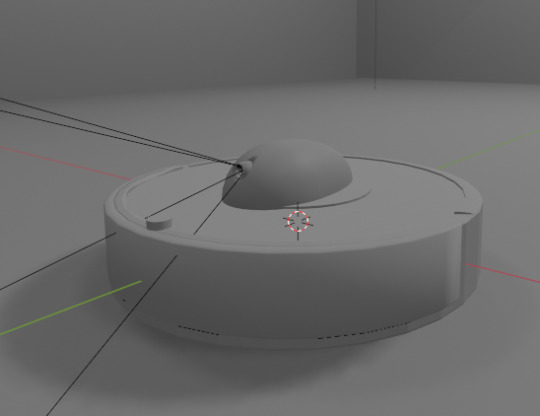
Everyone loves Roombas. Cats. People. Cat-people. There have been a number of Roomba hacks posted online over the years, but an often overlooked point is how very easy it is to use Roombas for cheap applied robotics projects.
Continuing on from a project done for academic purposes, today's showcase is a work in progress for a real-world application of Speech-to-text, actionable, transformer based AI models. MARVINA (Multimodal Artificial Robotics Verification Intelligence Network Application) is being applied, in this case, to this Roomba, modified with a Raspberry Pi 3B, a 1080p camera, and a combined mic and speaker system.

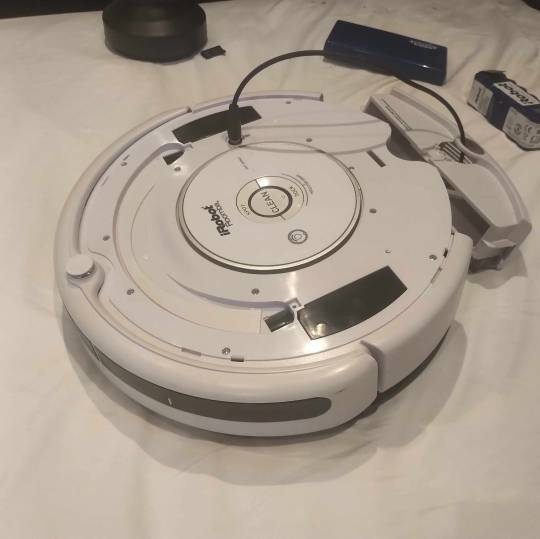
The hardware specifics have been a fun challenge over the past couple of months, especially relating to the construction of the 3D mounts for the camera and audio input/output system.
Roomba models are particularly well suited to tinkering - the serial connector allows the interface of external hardware - with iRobot (the provider company) having a full manual for commands that can be sent to the Roomba itself. It can even play entire songs! (Highly recommend)
Scope:
Current:
The aim of this project is to, initially, replicate the verbal command system which powers the current virtual environment based system.
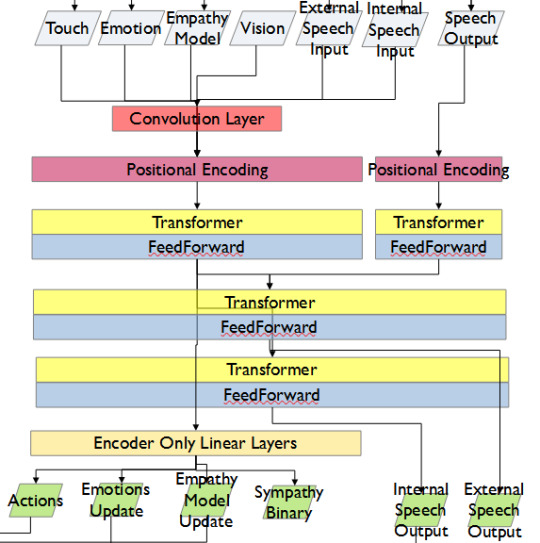
This has been achieved with the custom MARVINA AI system, which is interfaced with both the Pocket Sphinx Speech-To-Text (SpeechRecognition · PyPI) and Piper-TTS Text-To-Speech (GitHub - rhasspy/piper: A fast, local neural text to speech system) AI systems. This gives the AI the ability to do one of 8 commands, give verbal output, and use a limited-training version of the emotional-empathy system.
This has mostly been achieved. Now that I know it's functional I can now justify spending money on a better microphone/speaker system so I don't have to shout at the poor thing!
The latency time for the Raspberry PI 3B for each output is a very spritely 75ms! This allows for plenty of time between the current AI input "framerate" of 500ms.
Future - Software:
Subsequent testing will imbue the Roomba with a greater sense of abstracted "emotion" - the AI having a ground set of emotional state variables which decide how it, and the interacting person, are "feeling" at any given point in time.
This, ideally, is to give the AI system a sense of motivation. The AI is essentially being given separate drives for social connection, curiosity and other emotional states. The programming will be designed to optimise for those, while the emotional model will regulate this on a seperate, biologically based, system of under and over stimulation.
In other words, a motivational system that incentivises only up to a point.
The current system does have a system implemented, but this only has very limited testing data. One of the key parts of this project's success will be to generatively create a training data set which will allow for high-quality interactions.

The future of MARVINA-R will be relating to expanding the abstracted equivalent of "Theory-of-Mind". - In other words, having MARVINA-R "imagine" a future which could exist in order to consider it's choices, and what actions it wishes to take.
This system is based, in part, upon the Dyna-lang model created by Lin et al. 2023 at UC Berkley ([2308.01399] Learning to Model the World with Language (arxiv.org)) but with a key difference - MARVINA-R will be running with two neural networks - one based on short-term memory and the second based on long-term memory. Decisions will be made based on which is most appropriate, and on how similar the current input data is to the generated world-model of each model.
Once at rest, MARVINA-R will effectively "sleep", essentially keeping the most important memories, and consolidating them into the long-term network if they lead to better outcomes.
This will allow the system to be tailored beyond its current limitations - where it can be designed to be motivated by multiple emotional "pulls" for its attention.
This does, however, also increase the number of AI outputs required per action (by a magnitude of about 10 to 100) so this will need to be carefully considered in terms of the software and hardware requirements.
Results So Far:
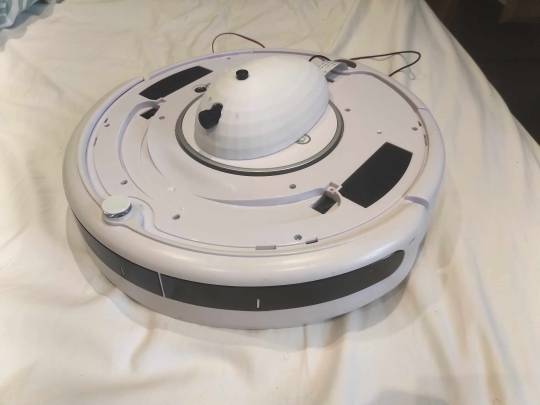
Here is the current prototyping setup for MARVINA-R. As of a couple of weeks ago, I was able to run the entire RaspberryPi and applied hardware setup and successfully interface with the robot with the components disconnected.
I'll upload a video of the final stage of initial testing in the near future - it's great fun!
The main issues really do come down to hardware limitations. The microphone is a cheap ~$6 thing from Amazon and requires you to shout at the poor robot to get it to do anything! The second limitation currently comes from outputting the text-to-speech, which does have a time lag from speaking to output of around 4 seconds. Not terrible, but also can be improved.
To my mind, the proof of concept has been created - this is possible. Now I can justify further time, and investment, for better parts and for more software engineering!
#robot#robotics#roomba#roomba hack#ai#artificial intelligence#machine learning#applied hardware#ai research#ai development#cybernetics#neural networks#neural network#raspberry pi#open source
9 notes
·
View notes
Text
Raspberry Pi Pico W has been designed to be a low cost yet flexible development platform for RP2040, with a 2.4GHz wireless interface and the following key features:
RP2040 microcontroller with 2MB of flash memory
On-board single-band 2.4GHz wireless interfaces (802.11n)
Micro USB B port for power and data (and for reprogramming the flash)
40 pin 21mmx51mm ‘DIP’ style 1mm thick PCB with 0.1″ through-hole pins also with edge castellations
Exposes 26 multi-function 3.3V general purpose I/O (GPIO)
23 GPIO are digital-only, with three also being ADC capable
Can be surface mounted as a module
3-pin ARM serial wire debug (SWD) port
Simple yet highly flexible power supply architecture
Various options for easily powering the unit from micro USB, external supplies or batteries
High quality, low cost, high availability
Comprehensive SDK, software examples, and documentation
Dual-core Cortex M0+ at up to 133MHz
On-chip PLL allows variable core frequency
264kByte multi-bank high-performance SRAM
2 notes
·
View notes
Note
Okay...
*Goes tô the monitors, and tries to access the permissions tô make herself admin*
Do you guys know her Serial number and key code, or do I need to hack in?
(I know nothing on software, sorry if it is too wrong)
N: I do! It's U-█████████
(OOC: The redaction doesn't have lore importance, I just don't know)
3 notes
·
View notes
Text
Future of Motion Graphics Video in the Film Industry
Which is more attractive and will stay in your memory longer: words and an image that is static or the same but motion? For obvious reasons, text and videos will typically be the more popular choice. The audience is frequently more engaged by motion graphics since they convey ideas effectively and straightforwardly.
Videos and digital footage dominate content marketing methods in the modern digital environment because they encourage audience engagement and action. The majority of these videos are motion graphics in a variety of designs. The use of motion graphics video in the film business is increasing as interest in them rises daily, which bodes well for their future use in the global film industry.
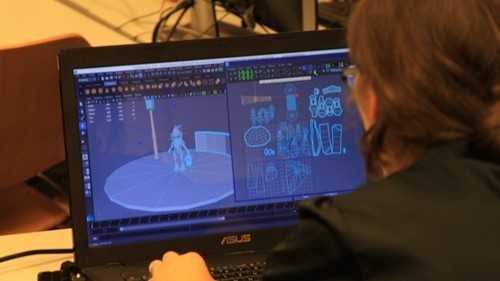
What are motion graphics?
Graphic designs in motion are referred to as motion graphics video. Digital footage is produced by motion designers using animation, various visual effects, and audio techniques. To help the audience understand a topic, motion graphics are frequently utilized to animate abstract concepts, words, or objects on the screen.
Future scope for motion designers in the global film industry
The Bureau of Labour Statistics (BLS) reports that many advertising companies, motion picture studios, and VFX studios employ animators, multimedia, and motion designers. By 2030, the field of motion graphics is anticipated to grow by 16%.
Motion designers are crucial in connecting the dots to provide engaging material as 3D modeling, calligraphy, and other 2D arts become a key element of the global cinema business.
Film motion graphics
Although producing a motion graphics video is a labor-intensive and time-consuming process, businesses are developing procedural animation approaches to lessen the challenge and streamline production. Motion designers can now use procedural algorithms to apply straightforward, preset procedures to 3D objects. This motion design software has limitless potential.

The potential for motion graphics is growing as virtual reality and artificial intelligence (AI) take center stage in the upcoming decade. The major players in the global entertainment business, like Disney, Netflix, YouTube, and others, are actively seeking talented motion graphic designers to join them as the need for motion graphics videos rises.
TV stars
Before TV personalities were introduced, motion graphics, ads, serials, films, and other forms of media were less effective. The TV channels had two different groups later when motion graphics were added to their identities and shows.
The first one focuses on the channel's brand, which is more constrained and selective because it has predetermined guidelines that direct the creation of any further visual content. Additionally, the person who works on each presentation is more animated and open, especially in terms of the sort of graphics.
These forms of TV identities are created so that all of the visual elements associated with the channel may be visible on the screen, including the show's schedule and lower thirds, line breaks, TV logos that display on the screen, and end titles for some programs.
The majority of TV networks constantly produce new shows for their schedules; as a result, they create motion graphic structures for those programs, much like you do for the network. The work gets more dynamic because it is challenging. It typically has a lesser influence and a consistent desire, though.
TV shows are well known for their excellent use of intros. Some of these are straightforward edits of the shows' scenes, but most of them are exquisitely animated and created works like those from Daredevil, Game of Thrones, etc.
Movies' titles
When a motion graphics video was first used, it was in movie opening titles, and most movie opening credits list the people who worked on the film's creation. Before the introduction of motion graphics, we saw that these names were essentially static, but now we can see that they are doing more than merely listing the names of the films or their cast. These introductions now set the scene and create an engaging environment where viewers feel more connected.
The titles that are featured in various films today come in many distinct forms. It is difficult not to have animated titles in superhero movies, especially when they are about superheroes. Additionally, this is growing in popularity, and many designers are choosing to focus their careers in this area.
Some of the motion graphics are utilized in the movie itself in addition to the titles. Portray texting or videos playing on a TV in the background, it is typically shown as a visual interaction with an actor. Even the animations might interact with the characters at times.
Exchange of Information
Sharing information with the audience was constant and boring until motion graphics videos were invented. However, with the advent of motion graphics, you can now turn your idea into an animation by including the appropriate soundtrack and other characteristics, making the content more appealing and understandable for the audience.
Logo Designs
Motion graphics can be used to bring animation to your company's logos, websites, and other materials to make them more appealing. This makes it easier to produce stunning images and engage with the audience.

Post on social media
People rely on social media for everything, including information, entertainment, news, online courses, etc. More people may view your social media postings if you use motion graphics in your content.
Benefits and Drawbacks of Motion Graphics
Motion graphics have had a significant impact on the film business to make their content more appealing to the viewer, but everything has pros and cons. We shall discover the benefits and drawbacks of motion graphics in this part.
Pros:
The fact that motion graphics don't require physical space may be a good argument to use them. With traditional video, you have to pick an appropriate location, plan a time to shoot, and rehearse your lines. However, these elements are no longer necessary due to the development of motion graphics. Graphics have been quite helpful in COVID-19 constraints because of this motion.
It also has the benefit of requiring less labor from the client. The client doesn't need to put up any further effort once the goals have been defined. The rest is up to the explainer video production company, which will create the content by your instructions.
Movie titles, marketing, information exchange, and other contexts all use motion graphics.
Motion graphics video makes communication simpler and more efficient.
Cons:
Motion graphics can seem impersonal, which is one of its drawbacks. The advantage of traditional video is that viewers may see the location or person they would be meeting before they go there. If done incorrectly, a motion graphics video is little more than an animated brochure. The audience will find it more engaging if there is some live footage, photography, or voice-over used.
Conclusion
The channel's quality determines the relationship between what is considered to be good and bad in motion graphics as well as between what is thought to be bad and good. Let's assume that the motion graphics video in the bespoke eLearning material development for TV identity is effectively developed. In that scenario, it will assist you in identifying the appropriate audience and differentiating your channel from others. In contrast, as the introduction and title are the first things that the audience sees in a movie or television show, their quality can be a deciding factor.
#animation#character design#digital art#doodle#graphic design#digital illustration#branding#infographic
2 notes
·
View notes
Text
Autel MaxiIM IM608 PRO II IM508 Registration & Activation Guide
This blog by AutelUSA.com offers a step-by-step guide to register and activate Autel MaxiIM IM608 Pro II or Autel MaxiIM IM508. If you have an earlier IM608 or IM608 Pro, you can also refer to this guide.
Step 1: Email Registration
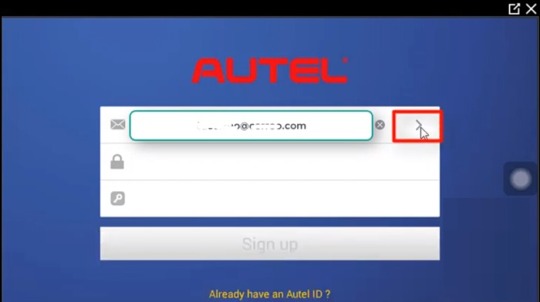
Create an account by entering your email address.
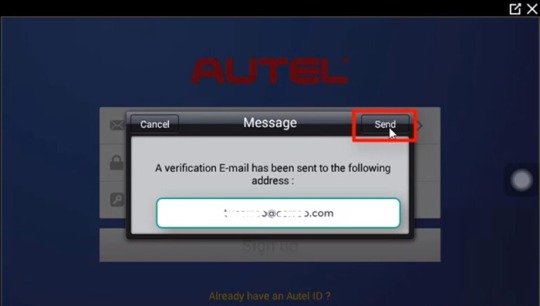
A verification email will be sent to your provided address.
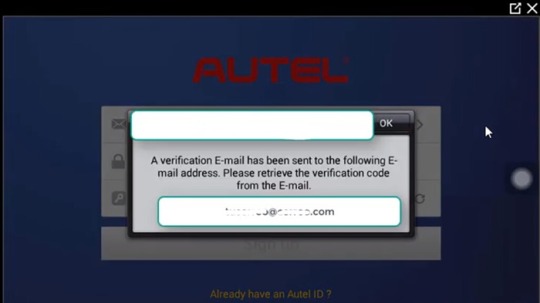
Obtain the verification code from your email inbox.
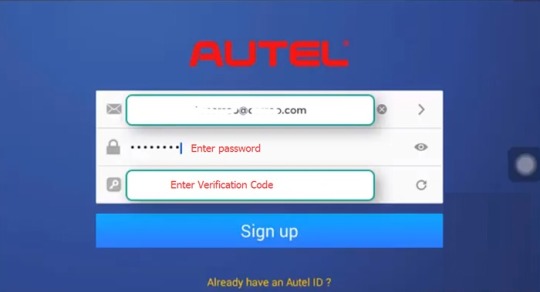
Input your email, password, and verification code to complete the sign-up process.
Step 2: MaxiIM Registration
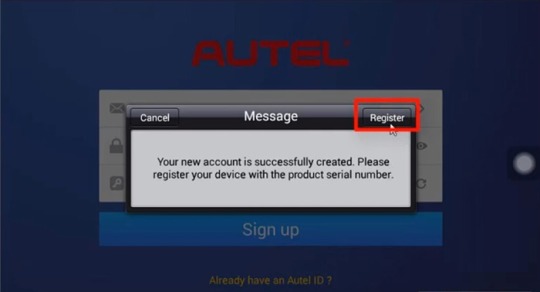
Register your device by following these steps:
Press the Register button.
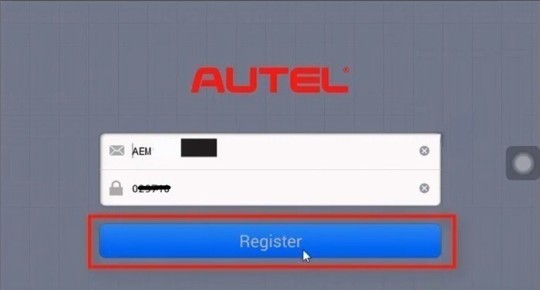
Enter the serial number and finish registration.
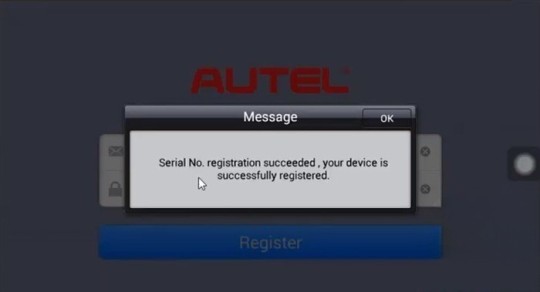
Your MaxiIM device is now successfully registered.
Step 3: Software Update
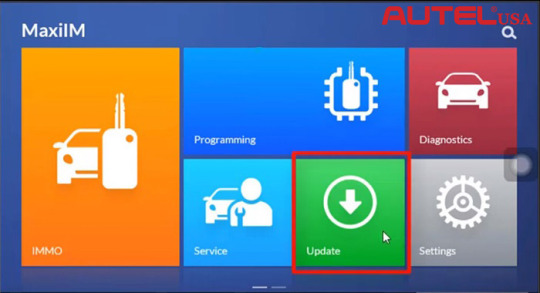
Access the MaxiIM menu and select the Update function.
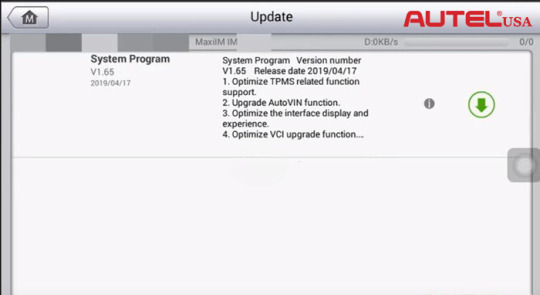
Check for available software updates and proceed with the download.
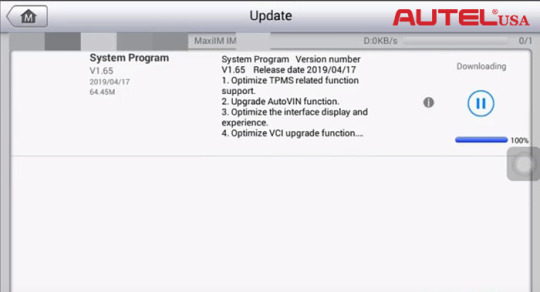
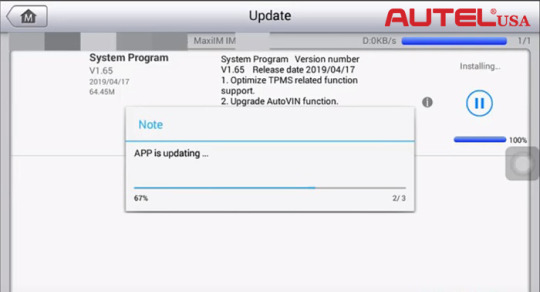
The MaxiIM APP will automatically install and update.
Launch the MaxiIM home menu.
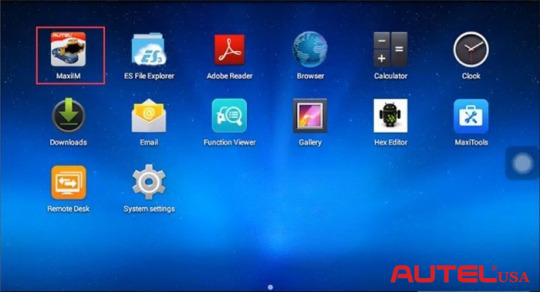
Open the MaxiIM App.
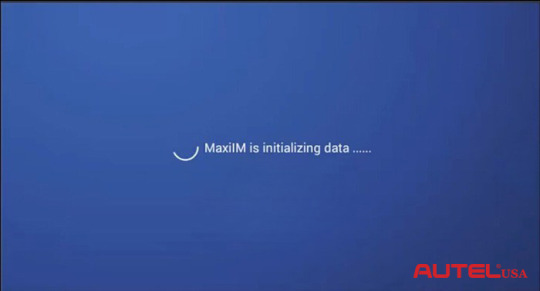
The MaxiIM device will initialize data.
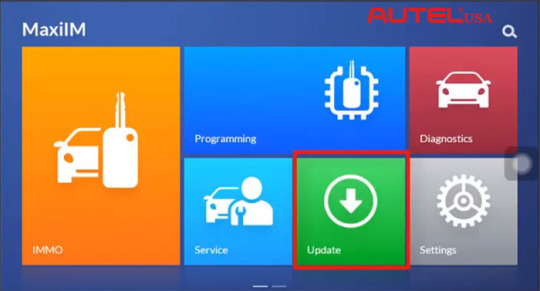
Go back to the Update function.
Check for available IMMO or Diagnosis updates and run the update.
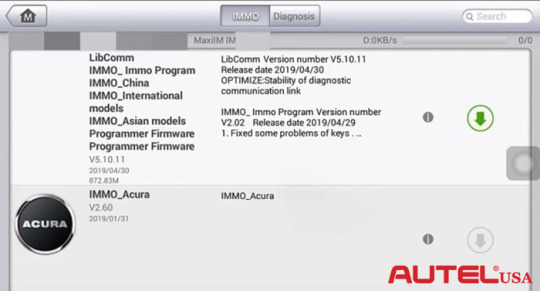
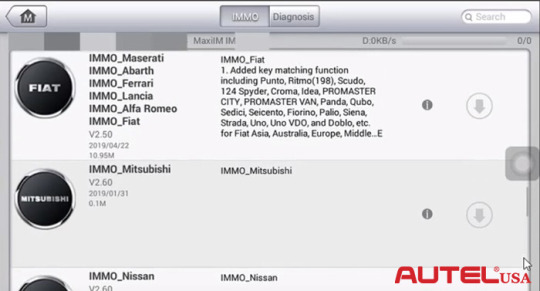
Congratulations! You have successfully completed the registration and activation process for your Autel IM608 Pro II or Autel IM508 key programmer.
1 note
·
View note
Text
SAP Manufacturing ERP Software At Maivin: Revolutionizing Industrial Operations
In today's fast-paced and digitally transforming manufacturing landscape, staying ahead requires more than just machinery and manpower — it demands intelligence, integration, and innovation. This is where SAP Manufacturing ERP Software steps in. At Maivin, we help manufacturing businesses harness the full potential of SAP’s industry-leading ERP solutions to boost productivity, ensure compliance, and drive sustainable growth.

What is SAP Manufacturing ERP Software?
SAP (Systems, Applications, and Products in Data Processing) offers one of the most powerful ERP (Enterprise Resource Planning) solutions tailored specifically for the manufacturing sector. It integrates all critical business processes — from supply chain management and production planning to inventory, quality control, and financials — into one unified system.
Key Modules of SAP Manufacturing ERP:
SAP PP (Production Planning) – Efficient planning of manufacturing processes.
SAP MM (Materials Management) – Smart inventory and procurement management.
SAP QM (Quality Management) – Maintain consistent product quality.
SAP PM (Plant Maintenance) – Reduce downtime through predictive maintenance.
SAP S/4HANA Manufacturing – Next-gen, real-time manufacturing insights.
Why Maivin Chooses SAP for Manufacturing?
At Maivin, we believe in precision, scalability, and performance. SAP ERP allows us to deliver exactly that to our clients in the manufacturing sector.
✅ 1. Real-Time Data and Analytics
Gain live insights into production processes, material movements, and workforce performance. SAP’s in-memory database, S/4HANA, helps manufacturers make quick, informed decisions.
✅ 2. Enhanced Supply Chain Efficiency
SAP ERP helps manufacturers manage suppliers, raw materials, and logistics effectively. Real-time tracking ensures you're never short on stock or stuck with surplus.
✅ 3. Improved Production Planning
With SAP’s intelligent planning tools, Maivin enables manufacturers to schedule and manage batch production, reduce bottlenecks, and meet customer demand on time.
✅ 4. Integrated Quality Control
Ensure compliance with international quality standards through automated inspections, documentation, and corrective actions – all integrated within the ERP system.
✅ 5. Workforce Empowerment
Empower your shop floor operators with mobile access, simplified dashboards, and automation tools. SAP also supports IoT integration for smart factories.
Features of SAP ERP for Manufacturing at Maivin
🔹 Cloud & On-Premise Deployment Options
🔹 AI-Driven Predictive Maintenance
🔹 Mobile Access to Factory Operations
🔹 Industry 4.0 Readiness
🔹 Batch Traceability and Serialization
🔹 Energy & Resource Consumption Monitoring
🔹 Automated Compliance Reporting
🔹 Seamless Integration with CRM, SCM & PLM
Industries Served by Maivin with SAP Manufacturing ERP
We help a wide range of industries optimize their manufacturing operations using SAP ERP:
Automotive & Auto Components
Electronics & Semiconductors
Pharmaceuticals & Life Sciences
Chemicals & Paints
Food & Beverage
Machinery & Equipment
Whether you run a discrete, process, or hybrid manufacturing operation — Maivin customizes SAP ERP to your specific needs.
Why Choose Maivin for SAP ERP Implementation?
Implementing SAP ERP is not just about software — it's about transformation. At Maivin, we ensure:
✔ 100% Customization according to business needs
✔ Certified SAP consultants with deep industry expertise
✔ End-to-End Implementation, Training, and Support
✔ Focus on ROI and operational efficiency
✔ Scalable architecture for future growth
We don’t just deploy — we partner with you to evolve your manufacturing capabilities.
📈 Results You Can Expect with SAP ERP from Maivin
Business Area
Before SAP ERP
After SAP ERP (with Maivin)
Production Planning
Manual & Delayed
Automated & Real-Time
Inventory Management
Overstock/Understock
Optimized Inventory Levels
Quality Control
Reactive
Proactive & Predictive
Compliance
Manual Efforts
Automated Reporting
Profit Margins
Low Visibility
High Data-Driven Insights
📞 Ready to Transform Your Manufacturing with SAP ERP? Contact Maivin Today!
Whether you're a mid-sized manufacturer or a large enterprise, Maivin helps you unlock the full value of SAP Manufacturing ERP Software. Our proven approach, agile deployment methods, and ongoing support ensure a smooth transition and sustainable success.
👉 Get in touch now for a personalized SAP ERP demo or consultation. 📧 Email: [email protected] | 📞 Phone: 9990911003
0 notes
Text
Top Features of UDYOG Cloud ERP Software for Indian Businesses

In today’s competitive business landscape, Indian enterprises — especially SMEs and growing manufacturers — require robust digital infrastructure to drive operational efficiency and regulatory compliance. udyog Cloud based ERP Software in india Software has emerged as a trusted and future-ready ERP solution that is tailor-made to meet the unique needs of Indian industries. Designed with deep domain expertise, UDYOG ERP offers a comprehensive suite of modules that empower businesses to scale efficiently while staying compliant with ever-evolving tax and operational regulations.
Key Features of Udyog Cloud ERP:
GST Compliance and Taxation:
Udyog Cloud based ERP Software in india simplifies your business’s tax processes by automating GST calculations, making sure every transaction is accurate and compliant. It generates e-Invoices instantly and fetches IRN (Invoice Reference Number) directly from the GST portal. The system also handles e-Way bill creation, helping you move goods legally and efficiently. With built-in TDS and TCS management, you can easily calculate and track tax deductions at source. All tax reports are auto-generated and ready for filing, reducing manual work and the risk of errors. This makes your business audit-ready and always aligned with government regulations.
Inventory and Warehouse Management:
UDYOG Cloud based ERP Software in india helps businesses manage their inventory efficiently and in real-time. It tracks stock levels across multiple warehouses, ensuring complete visibility at all times. With batch and serial number management, it becomes easier to trace items during production or after sales. The system also alerts users when stock is low, thanks to its automated reorder level feature. This avoids stockouts and overstocking, keeping your operations smooth. Whether you deal with raw materials or finished goods, inventory control becomes accurate and hassle-free.
Financial Accounting:
Udyog Cloud based ERP Software in india makes financial management easy and efficient for businesses. It allows you to record and manage all financial transactions, including ledgers and journals, in a systematic way. You can easily track what you owe to vendors (accounts payable) and what customers owe you (accounts receivable). The system also helps you match bank statements with your company’s records through simple bank reconciliation. If your business deals with foreign currency, Udyog ERP supports multi-currency transactions as well. Overall, it helps maintain accurate financial records and supports better decision-making.
Manufacturing and Production Planning:
UDYOG Cloud based ERP Software in india makes manufacturing operations more efficient by offering tools like Production Planning, Material Requirement Planning (MRP), and Bill of Materials (BOM) management. It helps you plan what to produce, when to produce, and what materials are needed. The system ensures that raw materials are available at the right time to avoid production delays. With BOM, you can define the components required to build a product. Shop floor control allows you to monitor ongoing work, track job progress, and manage machine and labor usage. Altogether, it streamlines the entire manufacturing cycle — from planning to final production.
CRM Integration:
Udyog Cloud based ERP Software in india comes with built-in customer relationship management (CRM) features that help businesses stay connected with their customers. It allows you to easily capture and manage leads, follow up with prospects, and convert them into loyal customers. Sales teams can track inquiries, quotations, and orders in one place, making their work more organized and efficient. You can also view sales performance reports to see how your business is growing. With complete customer history and communication tracking, your team can provide better service and build long-term relationships. Overall, the CRM tools in Udyog ERP help improve customer satisfaction and boost sales.
Advanced Analytics and Reporting:
UDYOG Cloud based ERP Software in india comes equipped with powerful real-time analytics and customizable reporting tools, designed to provide businesses with valuable insights into their operations. Whether it’s tracking sales performance, inventory levels, or financial health, the platform delivers accurate, up-to-date data at your fingertips. You can easily create and modify reports to match your specific business needs, helping you make informed, data-driven decisions. These insights enable businesses to identify trends, spot potential issues early, and plan strategies effectively for growth. The customizable reports also allow you to focus on the metrics that matter most to your business, improving overall decision-making and efficiency.
User-Friendly Interface and Support:
UDYOG Cloud based ERP Software in india is designed with a user-friendly interface that makes it easy for businesses to navigate and operate without extensive technical knowledge. It offers a smooth and intuitive experience, allowing employees to quickly adapt to the system. Additionally, UDYOG provides dedicated customer support to assist with any queries or issues, ensuring continuous business operations. Regular updates keep the software current with the latest features and security enhancements. On-demand training is also available, helping users get the most out of the software and empowering them to use it effectively. This combination of usability, support, and learning resources ensures a seamless experience for businesses.
udyog Cloud based ERP Software in india stands as a powerful, end-to-end ERP solution that is finely tuned to the needs of Indian businesses. From tax compliance and financial control to inventory, manufacturing, and asset management — udyog ERP provides the tools to streamline operations, reduce manual work, and scale with confidence. For businesses seeking a reliable partner in digital transformation, udyog Cloud ERP is an investment in sustainable growth.
0 notes
Text
How Inventory Solutions Help UAE Businesses Comply with VAT Regulations

Since the implementation of Value Added Tax (VAT) in the UAE in 2018, businesses across the country have been compelled to revisit and revise their financial and operational processes. Among the most affected areas is inventory management—a core aspect of businesses dealing with physical goods. Thankfully, modern inventory management solutions have emerged as essential tools not only for improving operational efficiency but also for ensuring full compliance with UAE VAT regulations.
Understanding VAT Compliance in the UAE
The UAE imposes a standard VAT rate of 5% on most goods and services. To comply, businesses must accurately record purchases and sales, maintain proper documentation, and submit timely VAT returns. Any inconsistency or lack of transparency in inventory records can result in penalties or audits by the Federal Tax Authority (FTA).
Where Inventory Management Solutions Make a Difference
Modern inventory management software plays a vital role in maintaining VAT compliance. Here’s how:
1. Automated VAT Calculations on Inventory Transactions
Inventory management systems equipped with UAE-specific VAT settings can automatically calculate the correct tax for each transaction—be it a purchase, sale, or return. This reduces the risk of manual errors and ensures accurate invoicing and tax reporting.
2. Real-Time Inventory Tracking and Reporting
These solutions provide real-time visibility into inventory movement, including goods received, sold, returned, or transferred. This level of tracking is crucial for generating accurate VAT reports, especially for reconciling taxable supplies and maintaining proper stock valuation.
3. Seamless Integration with Accounting and ERP Systems
Inventory solutions often integrate smoothly with accounting and ERP platforms. This integration ensures that VAT data flows consistently across purchasing, sales, and financial modules, enabling faster and more accurate VAT return preparation.
4. Audit-Ready Documentation
The FTA requires that businesses maintain clear records of their stock movements and financial transactions for at least five years. Inventory management systems automatically store digital records and logs, making it easy to retrieve data during audits or inspections.
5. Batch and Serial Number Tracking
Products that are sold in batches or have serial numbers must be accurately tracked, especially when dealing with returns or warranty claims. Inventory software helps trace these movements clearly—critical for managing input VAT and ensuring full documentation.
6. Customizable VAT Reports
Many UAE-focused inventory solutions come with built-in VAT reporting modules that generate FTA-compliant reports. These reports save time and reduce errors when preparing quarterly or monthly VAT returns.
7. Multi-Warehouse and Multi-Branch VAT Management
For businesses with operations spread across different Emirates, managing VAT across branches and warehouses becomes complex. Inventory systems simplify this by consolidating data across locations, ensuring unified and compliant VAT reporting.
Why It Matters More in 2025
With growing regulatory oversight and increasing digitization by the UAE government, the margin for error is shrinking. Businesses are expected to be more proactive and precise in their VAT compliance efforts. Using advanced inventory management solutions is no longer optional—it’s a necessity.
Final Thoughts
VAT compliance doesn’t have to be a burden. By investing in a robust Inventory Management Solutions UAE tailored to the UAE market, businesses can automate complex processes, reduce risk, and ensure transparency. Whether you're a retailer, wholesaler, or distributor, leveraging the right technology is key to staying ahead in today’s regulated business environment.
0 notes
Text
Why Choosing the Right SAP Business One Partner in Delhi is Critical for Your Business Growth
When it comes to streamlining operations and driving growth in small to mid sized businesses, SAP Business One stands out as a powerful ERP solution. However, to truly unlock its potential, selecting the right SAP Business One Partner in Delhi is essential. Delhi, being a bustling hub for commerce, manufacturing, and services, presents a highly competitive environment making efficient ERP implementation not just a choice but a necessity.
A professional SAP Business One Partner in Delhi brings deep domain expertise, localized support, and a thorough understanding of regulatory compliance in India. They don't just provide software they offer tailored solutions that align with your business goals. From implementation and customization to ongoing support and upgrades, a trusted partner ensures you get the maximum return on your investment.
Why Your Business Needs SAP Business One
SAP Business One is designed specifically for SMEs. It integrates all core business functions finance, sales, CRM, purchasing, inventory, and operations into a single system. Here are just a few benefits:
Real-Time Data Access: Make informed decisions with real time insights and customizable dashboards.
Automation of Business Processes: Improve efficiency by automating repetitive tasks and workflows.
Improved Compliance: Stay up to date with GST and other regulatory requirements seamlessly.
Scalability: Easily scalable as your business grows, whether locally or globally.
However, even the best ERP software can fall short without proper implementation. That’s where the role of a skilled SAP Business One Partner in Delhi becomes crucial.
What to Look for in a SAP Business One Partner
Choosing the right partner goes beyond pricing. Here are some key factors to consider:
Experience & Certification: Look for a partner with certified SAP consultants and a proven track record.
Local Expertise: A partner based in Delhi understands the regional business dynamics and legal requirements better.
End-to-End Services: From pre-implementation consulting to post go live support.
Customization Abilities: Every business is unique; your partner should be able to tailor the solution accordingly.
Customer Support: Reliable after sales support ensures that your systems run smoothly and efficiently.
By working with a trusted SAP Business One Partner in Delhi, you avoid common pitfalls such as data migration issues, user adoption challenges, and poor system configuration.
For more services - https://accelontech.com/
Industries Benefiting from SAP Business One
SAP Business One is versatile and caters to a wide range of industries. In Delhi, where industries such as manufacturing, retail, pharmaceuticals, and logistics are thriving, the software offers vertical specific solutions that include:
Batch and serial number tracking for manufacturers
Integrated POS systems for retailers
Compliance tracking for pharma companies
Real time inventory and delivery management for logistics providers
Each of these solutions becomes significantly more powerful when implemented and supported by the right local partner.
Conclusion
Accelon Technologies is the go to SAP Business One Partner in Delhi for businesses aiming to optimize their operations and scale with confidence. With years of experience, industry specific expertise, and a client first approach, Accelon Technologies ensures that SAP Business One works for you not the other way around. Their end to end services, from consultation and customization to training and support, make them a reliable partner for businesses across the capital region.
Choosing the right SAP Business One Partner in Delhi is a strategic investment that can define your business success in the long run. Make the smart choice today partner with experts who understand your local needs and global ambitions.
#SAP Business One Partner in Pune#SAP Business One Partner in Mumbai#SAP Business One Partner in Delhi
1 note
·
View note